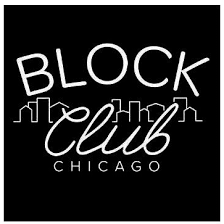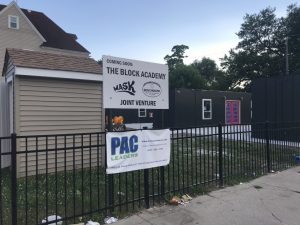News
CCLBA
2020-09-18T12:53:42+00:00
 The virtual community reveal is 10:30 a.m.-noon Sunday.
The virtual community reveal is 10:30 a.m.-noon Sunday. “Getting the deed from the Land Bank to the lot at 75th and Stewart allowed MASK to expand its work to combat violence and build community at the corner where we started in 2014, which was the site of the senseless and tragic murder of Lucille Barnes,” says Tamar Manasseh, founder of MASK. “We went from being squatters on the sidewalk with a couple of grills to pouring concrete and building our On The Block Academy.”
“Getting the deed from the Land Bank to the lot at 75th and Stewart allowed MASK to expand its work to combat violence and build community at the corner where we started in 2014, which was the site of the senseless and tragic murder of Lucille Barnes,” says Tamar Manasseh, founder of MASK. “We went from being squatters on the sidewalk with a couple of grills to pouring concrete and building our On The Block Academy.” “We believe in building communities block by block,” Manasseh says. “The Land Bank is in an ideal position to help with this work, taking a problem and turning it into a solution. We’re not developers, and we don’t have a lot of money. Finding another location for this community would have been impossible without their help.”
“We believe in building communities block by block,” Manasseh says. “The Land Bank is in an ideal position to help with this work, taking a problem and turning it into a solution. We’re not developers, and we don’t have a lot of money. Finding another location for this community would have been impossible without their help.” The firm, Greenlining Realty USA, broke ground in late June on Woodlawn Pointe, a mix of new and rehabbed residential properties in the West Woodlawn area including seven new-construction and two renovated homes in a mix of single- and multi-family buildings.
The firm, Greenlining Realty USA, broke ground in late June on Woodlawn Pointe, a mix of new and rehabbed residential properties in the West Woodlawn area including seven new-construction and two renovated homes in a mix of single- and multi-family buildings. L&MC Investments is currently building 12 brand new affordable single-family homes in Humboldt Park through a partnership with the City of Chicago. And during the past five years, the company has also partnered with the Cook County Land Bank Authority to rehab vacant, abandoned properties. The company has rehabbed about five properties that it acquired from the Land Bank and is currently rehabbing a property in the Hermosa neighborhood.
L&MC Investments is currently building 12 brand new affordable single-family homes in Humboldt Park through a partnership with the City of Chicago. And during the past five years, the company has also partnered with the Cook County Land Bank Authority to rehab vacant, abandoned properties. The company has rehabbed about five properties that it acquired from the Land Bank and is currently rehabbing a property in the Hermosa neighborhood.  A general contractor for more than 20 years, Lindsey recently sold two single-family homes in Englewood since the pandemic hit Chicago, and he is now rehabbing a six-unit Englewood building that will be discounted housing for veterans in honor of his father, a veteran who died last year. He credits his success to being smarter with money, plus the Cook County Land Bank Authority’s vast pool of low-priced abandoned properties, tailor-made for small local developers.
A general contractor for more than 20 years, Lindsey recently sold two single-family homes in Englewood since the pandemic hit Chicago, and he is now rehabbing a six-unit Englewood building that will be discounted housing for veterans in honor of his father, a veteran who died last year. He credits his success to being smarter with money, plus the Cook County Land Bank Authority’s vast pool of low-priced abandoned properties, tailor-made for small local developers.